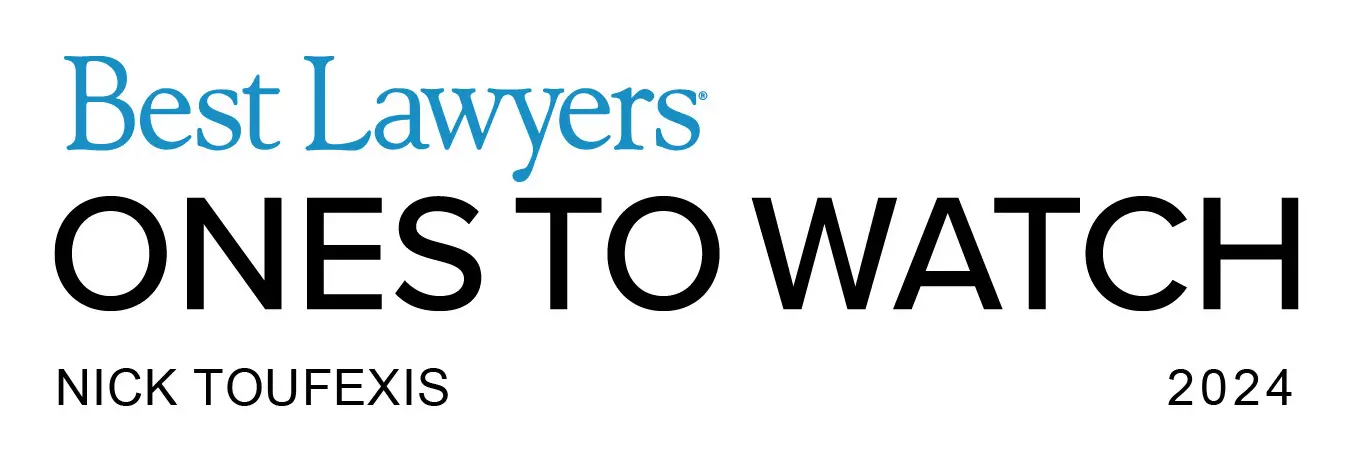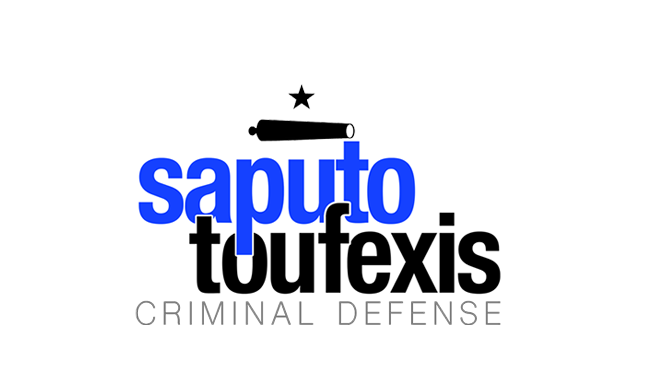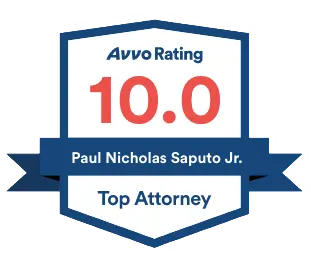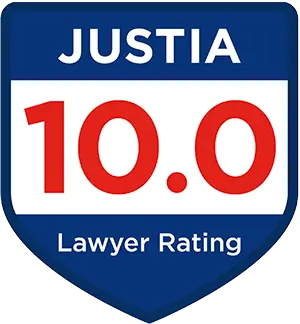The Texas Possession of Controlled Substance law makes it illegal to knowingly or intentionally possess certain kinds of drugs without a prescription or special permission.
POSSESSION OF CONTROLLED SUBSTANCE: ATTORNEY FAQs
- What is the Possession of Controlled Substance law in Texas?
- What is the punishment for Possession of a Controlled Substance?
- What drugs are in each penalty group?
- Can you get probation for Possession of a Controlled Substance in Texas?
- What is the statute of limitation for Possession of Controlled Substance in Texas?
- What changed in 2015 regarding Adderall and Vyvanse?
Texas law categorizes most controlled substances into different “Penalty Groups.” It is important to know which category a particular drug falls into because the penalties are different for each group are different.
The Texas legislature codified the Possession of Controlled Substance criminal offenses in Texas Health and Safety Code Sections 481.115, 481.1151, 481.116, 481.1161, 481.117, and 481.118. The most recent updates to this law came in 2023 when the legislature added language clarifying that penalty provisions carrying potential life imprisonment sentences were first degree felonies.
The Health and Safety Code classifies the Texas Possession of Controlled Substance law under Title 6 “Food, Drugs, Alcohol, and Hazardous Substances,” Chapter 481 “Texas Controlled Substances Act.”
Have you been charged with Possession of a Controlled Substance? Book a consultation to discuss legal representation with attorneys Paul Saputo and Nicholas Toufexis today.
or Text or Call (888) 239-9305
What is the Possession of Controlled Substance law in Texas?
The Texas Possession of Controlled Substance laws generally prohibit knowingly or intentionally possessing a controlled substance listed in a Penalty Group (as described below), unless you obtained the substance directly from or under a valid prescription or order of a practitioner acting in the course of professional practice, or unless otherwise authorized under the Texas Controlled Substances Act. Drugs in Penalty Group 1-A are illegal to possess even with a prescription.[1]
However, Possession of Controlled Substance is not just one law in Texas. The laws that prohibit possession of controlled substances are found among several different statutes in Chapter 481 of the Texas Health and Safety Code. Each statute prohibits the possession of a certain class of drugs according to their “penalty group” as follows:
- Possession of Penalty Group 1 Substances (HSC §481.115)
- Possession of Penalty Group 1-A Substances (HSC §481.1151)
- Possession of Penalty Group 1-B Substances (HSC §481.115)
- Possession of Penalty Group 2 Substances (HSC §481.116)
- Possession of Penalty Group 2-A Substances (HSC §481.1161)
- Possession of Penalty Group 3 Substances (HSC §481.117)
- Possession of Penalty Group 4 Substances (HSC §481.118)
In addition to possession of drugs that are classified into the penalty groups, Texas law also prohibits the possession of certain controlled substances that are not classified into penalty groups, including the following:
- Manufacture, Delivery, or Possession of Miscellaneous Substances (HSC 481.119)
- Possession of Marijuana (HSC §481.121)
- Possession of Anhydrous Ammonia (HSC §481.1245)
- Possession of Drug Paraphernalia (HSC §481.125)
What is the punishment for Possession of a Controlled Substance?
The punishment level for a Possession of a Controlled Substance offense is classified according to both the penalty group involved and the amount of drugs alleged to have been in your possession. You can find the breakdown for each penalty level below, under the current law as of 2024. In addition, the Texas Drug-Free Zone penalty enhancement applies to this offense.
Possession of PG 1 and PG 1-B: Penalty Scheme
The classification of the punishment for the offenses of Possession of Substance in Penalty Group 1 or Penalty Group 1-B ranges from a state jail felony to a first degree felony, depending on the aggregate weight, including adulterants or dilutants, of the drugs in your possession:[2]
- Less than one gram: a state jail felony. §481.115(b)
- One to less than four grams: a third degree felony. §481.115(c)
- Four to less than 200 grams: a second degree felony. §481.115(d)
- 200 to less than 400 grams: a first degree felony. §481.115(e)
- 400 grams or more: a first degree felony with a minimum term of imprisonment of 10 years and a fine up to $100,000. §481.115(f)
Possession of PG 1-A: Penalty Scheme
The classification of the punishment for the offense of Possession of Substance in Penalty Group 1-A ranges from a state jail felony to a first degree felony, depending on the number of “abuse units” of the drugs in your possession:[3]
- Fewer than 20 “abuse units”: a state jail felony. §481.1151(b)(1)
- 20 or more but fewer than 80 units: a third degree felony. §481.1151(b)(2)
- 80 or more but fewer than 4,000 units: a second degree felony. §481.1151(b)(3)
- 4,000 or more but fewer than 8,000 units: a first degree felony. §481.1151(b)(4)
- 8,000 or more units: a first degree felony punishable by imprisonment for life or for a term of not more than 99 years or less than 15 years and a fine up to $250,000. §481.1151(b)(5)
Possession of PG 2: Penalty Scheme
The classification of the punishment for the offense of Possession of Substance in Penalty Group 2 ranges from a state jail felony to a first degree felony, depending on the aggregate weight, including adulterants or dilutants, of the drugs in your possession:[4]
- Less than one gram: a state jail felony. §481.116(b)
- One gram or more but less than four grams: a third degree felony. §481.116(c)
- Four grams or more but less than 400 grams: a second degree felony. §481.116(d)
- 400 grams or more: a first degree felony punishable by imprisonment in the Texas Department of Criminal Justice for life or for a term of not more than 99 years or less than five years, and a fine not to exceed $50,000. §481.116(e)
Possession of PG 2-A: Penalty Scheme
The classification of the punishment for the offense of Possession of Substance in Penalty Group 2-A ranges from a state jail felony to a first degree felony, depending on the aggregate weight, including adulterants or dilutants, of the drugs in your possession:[5]
- Two ounces or less: a Class B misdemeanor. §481.1161(b)(1)
- More than two ounces but less than four ounces: a Class A misdemeanor. §481.1161(b)(2)
- More than four ounces but less than five pounds: a state jail felony. §481.1161(b)(3)
- More than five pounds but less than 50 pounds: a third degree felony. §481.1161(b)(4)
- More than 50 pounds but less than 2,000 pounds: a second degree felony. §481.1161(b)(5)
- More than 2,000 pounds: a first degree felony. §481.1161(b)(6)
Possession of PG 3: Penalty Scheme
The classification of the punishment for the offense of Possession of Substance in Penalty Group 3 ranges from a Class A misdemeanor to a first degree felony, depending on the aggregate weight, including adulterants or dilutants, of the drugs in your possession:[6]
- Less than 28 grams: a Class A misdemeanor. §481.117(b)
- 28 grams or more but less than 200 grams: a third degree felony. §481.117(c)
- 200 grams or more but less than 400 grams: a second degree felony. §481.117(d)
- 400 grams or more: a first degree felony with a minimum of five years, in prison and a fine not to exceed $50,000. §481.117(e)
Possession of PG 4: Penalty Scheme
The classification of the punishment for the offense of Possession of Substance in Penalty Group 4 ranges from a Class B misdemeanor to a first degree felony, depending on the aggregate weight, including adulterants or dilutants, of the drugs in your possession:[7]
- Less than 28 grams: a Class B misdemeanor. §481.118(b)
- 28 grams or more but less than 200 grams: a third degree felony. §481.118(c)
- 200 grams or more but less than 400 grams: a second degree felony. §481.118(d)
- 400 grams or more: a first degree felony with a minimum of five years in prison and a fine not to exceed $50,000. §481.118(e)
The Drug-Free Zone Penalty Enhancement
The “drug-free zone” penalty enhancement applies if the offense was committed: (1) in, on, or within 1,000 feet of any real property that is owned, rented, or leased to a school or school board, the premises of a public or private youth center, or a playground; (2) on a school bus; or (3) by any unauthorized person 18 years of age or older, in, on, or within 1,000 feet of premises owned, rented, or leased by a general residential operation operating as a residential treatment center.[8]
The Drug-Free Zone penalty enhancement provisions include enhancements under subsections (c), (d), (e), or (f). Under those provisions, the minimum term of confinement for convictions under Sections 481.115(c)-(f), 481.1151(b)(2), (3), (4), or (5), 481.116(c), (d), or (e), 481.1161(b)(4), (5), or (6), 481.117(c), (d), or (e), and 481.118(c), (d), or (e), are increased by five years and the maximum fine for the offense is doubled.[9] Convictions under Sections 481.115(b), 481.1151(b)(1), 481.116(b), and 481.1161(b)(3) are enhanced to third degree felonies.[10] Convictions under Section 481.117(b) are enhanced to state jail felonies.[11] Convictions under Section 481.118(b) are enhanced to Class A misdemeanors.[12]
What drugs are in each penalty group?
Each penalty group contains a unique set of controlled substances. The penalties for Possession of a Controlled Substance vary depending on which penalty group of drugs are involved.
What drugs are in Penalty Group 1
The drugs in Penalty Group 1 include multiple categories, including opiates, opium derivatives, cocaine derivatives, poppy derivatives. Notable drugs included are cocaine, Oxycodone, heroin, ketamine, Rohypnol, GHB, and methadone (see the footnote for a link to the full list of controlled substances in this penalty group).[13]
The list of drugs in Penalty Group 1 changed in 2017, 2021, and 2023. If you are dealing with a charge that occurred prior to September, 1, 2023, make sure you check the version of the list that was in effect at the time of the alleged offense.
What drugs are in Penalty Group 1-A
Notable drugs in the Penalty Group 1-A group are lysergic acid diethylamide (LSD) and certain other “designer” drugs (see the footnote for a link to the full list of controlled substances in this penalty group).[14]
The list of drugs in Penalty Group 1-A was not changed in 2023 and was most recently changed in 2015. If you are dealing with a charge that occurred prior to September, 1, 2015, make sure you check the version of the list that was in effect at the time of the alleged offense.
What drugs are in Penalty Group 1-B
The legislature created Penalty Group 1-B in 2021.[15] As of September 1, 2023, the drugs in Penalty Group 1-B include:[16]
- Acetyl-alpha-methylfentanyl (N-[1-(1-methyl-2- phenethyl)-4-piperidinyl]-N-phenylacetamide);
- Alfentanil;
- Alpha-methylthiofentanyl (N-[1-methyl-2-(2- thienyl)ethyl-4-piperidinyl]-N-phenylpropanamide);
- Beta-hydroxyfentanyl (N-[1-(2-hydroxy-2- phenethyl)-4-piperidinyl] -N-phenylpropanamide);
- Beta-hydroxy-3-methylfentanyl;
- Carfentanil;
- Fentanyl, alpha-methylfentanyl, and any other derivative of fentanyl;
- 3-methylfentanyl(N-[3-methyl-1-(2-phenylethyl)- 4-piperidyl]-N-phenylpropanamide);
- 3-methylthiofentanyl(N-[3-methyl-1-(2-thienyl) ethyl-4-piperidinyl]-N-phenylpropanamide);
- Para-fluorofentanyl(N-(4-fluorophenyl)-N-1-(2- phenylethyl)-4-piperidinylpropanamide);
- Remifentanil;
- Sufentanil;
- Thiofentanyl(N-phenyl-N-[1-(2-thienyl)ethyl-4- piperidinyl]-propanamide).
Prior to September 1, 2023, the only drugs inlcuded in Penalty Group 1-B were fentanyl, alpha-methylfentanyl, and any other derivative of fentanyl.[17]
What drugs are in Penalty Group 2
Penalty Group 2 consists of a long list of chemicals, but the notable inclusions are PHP and chemicals that are frequently found in “Shrooms” aka “Magic Mushrooms” (see the footnote for a link to the full list of controlled substances in this penalty group).[18]
The list of drugs in Penalty Group 2 was not updated in 2023 and was last changed in 2017. If you are dealing with a charge that occurred prior to September, 1, 2017, make sure you check the version of the list that was in effect at the time of the alleged offense.
What drugs are in Penalty Group 2-A
Penalty Group 2-A consists of synthetic chemical compounds that are a cannabinoid receptor agonist and mimic the pharmacological effect of naturally occurring cannabinoids (see the footnote for a link to the full list of controlled substances in this penalty group).[19]
The list of drugs in Penalty Group 2-A was not updated in 2023 and was last changed in 2015. If you are dealing with a charge that occurred prior to September, 1, 2015, make sure you check the version of the list that was in effect at the time of the alleged offense.
What drugs are in Penalty Group 3
Penalty Group 3 drugs include notable prescription drugs like Testosterone and other anabolic steroids, Alprazolam (Xanax), Clonazepam (Klonopin, among other brand names), Midazolam (Versed, among other brand names), certain opiates, Peyote and Salvia divinorum (see the footnote for a link to the full list of controlled substances in this penalty group).[20]
The list of drugs in Penalty Group 3 was not updated in 2023 and was last changed in 2017. If you are dealing with a charge that occurred prior to September, 1, 2017, make sure you check the version of the list that was in effect at the time of the alleged offense.
What drugs are in Penalty Group 4
Penalty Group 4 drugs includes certain drugs that are legal but might be abused, including Buprenorphine (used in heroin addiction recovery), codeine (used in cough medicines) and various other drugs (see the footnote for a link to the full list of controlled substances in this penalty group).[21]
The list of drugs in Penalty Group 4 was not updated in 2023 and has not been changed since 2001.
Can you get probation for Possession of a Controlled Substance in Texas?
The Texas Code of Criminal Procedure generally allows both judges and juries to grant probation for Possession of a Controlled Substance, and judges are also allowed to accept deferred adjudication plea deals.[22]
Note, however, that no matter the offense, neither judges nor juries may recommend community supervision for any suspended sentence of over 10 years.[23] Also, judges may not grant community supervision after a conviction if (1) the defendant used or exhibited a deadly weapon during the commission of the felony or immediate flight thereafter and (2) the defendant used or exhibited the deadly weapon himself or was a party to the offense and knew that a deadly weapon would be used or exhibited.[24]
Additionally, if you have been previously convicted of an offense for which punishment was increased under the Drug-Free Zone penalty enhancement, convictions for Possession of a Controlled Substance enhanced under a Drug-Free Zone subsection (c), (d), (e), or (f) penalty enhancement are not eligible for community supervision or deferred adjudication.[25]
What is the statute of limitation for Possession of Controlled Substance in Texas?
Misdemeanor level Possession or Delivery of Drug Paraphernalia charges have a two-year limitations period.[26] Felony level offenses have a three-year limitations period.[27]
What changed in 2015 regarding Adderall and Vyvanse?
There was an important update to the law in 2015 regarding Adderall (amphetamine), and Vyvanse (lisdexamfetamine). The legislature excluded any FDA-approved substances from Penalty Group 2, even those specifically listed in that section.[28] Possession of those offenses became punishable only as Class B misdemeanors under the “miscellaneous substances” law rather than as felonies under the Possession of Penalty Group 2 substances.
However, this law was repealed in 2017.[29] Accordingly, Adderall and Vyvanse cases that occurred between September 1, 2015, and September 1, 2017, should not be Penalty Group 2 cases.
Legal References:
^1. See Texas Health and Safety Code §481.1151^2. Texas Health and Safety Code §481.115(b), (c), (d), (e), and (f)^3. Texas Health and Safety Code §481.1151(b)(1), (2), (3), (4) and (5)^4. Texas Health and Safety Code §481.116(b), (c), (d), and (e)^5. Texas Health and Safety Code §481.1161(b)(1), (2), (3), (4), (5) and (6)^6. Texas Health and Safety Code §481.117(b), (c), (d), and (e)^7. Texas Health and Safety Code §481.118(b), (c), (d), and (e)^8. Texas Health And Safety Code §481.134(c), (d), (e), and (f)^9. Texas Health And Safety Code §481.134(c)^10. Texas Health And Safety Code §481.134(d)^11. Texas Health And Safety Code §481.134(e)^12 Texas Health And Safety Code §481.134(f)^13. Texas Health and Safety Code §481.102^14. Texas Health and Safety Code §481.1021^15. See SB 768, 87th Texas Legislature (RS), Section 3^16. Texas Health and Safety Code §481.1022, as amended by HB 6, 88th Texas Legislature (RS), Section 3^17. cf SB 768, 87th Texas Legislature (RS), Section 3, and HB 6, 88th Texas Legislature (RS), Section 3^18. Texas Health and Safety Code Section 481.103^19. Texas Health and Safety Code §481.1031^20. Texas Health and Safety Code §481.104^21. Texas Health and Safety Code §481.105^22. See Chapter 42, Texas Code of Criminal Procedure, Art. 42A.054, Art. 42A.056, Art. 42A.102 .^23. Art. 42A.053(c), Texas Code of Criminal Procedure^24. Art. 42A.054(b), Texas Code of Criminal Procedure^25. See Art. 42A.054(a)(17)(B), Texas Code of Criminal Procedure, Art. 42A.056(7), Texas Code of Criminal Procedure, and Art. 42A.102(b)(1)(D), Texas Code of Criminal Procedure^26. Code of Criminal Procedure 12.02(a)^27. See Code of Criminal Procedure 12.01(9)^28. SB 172, 84th Legislature^29. HB 2671, 85th Legislature, Section 3








